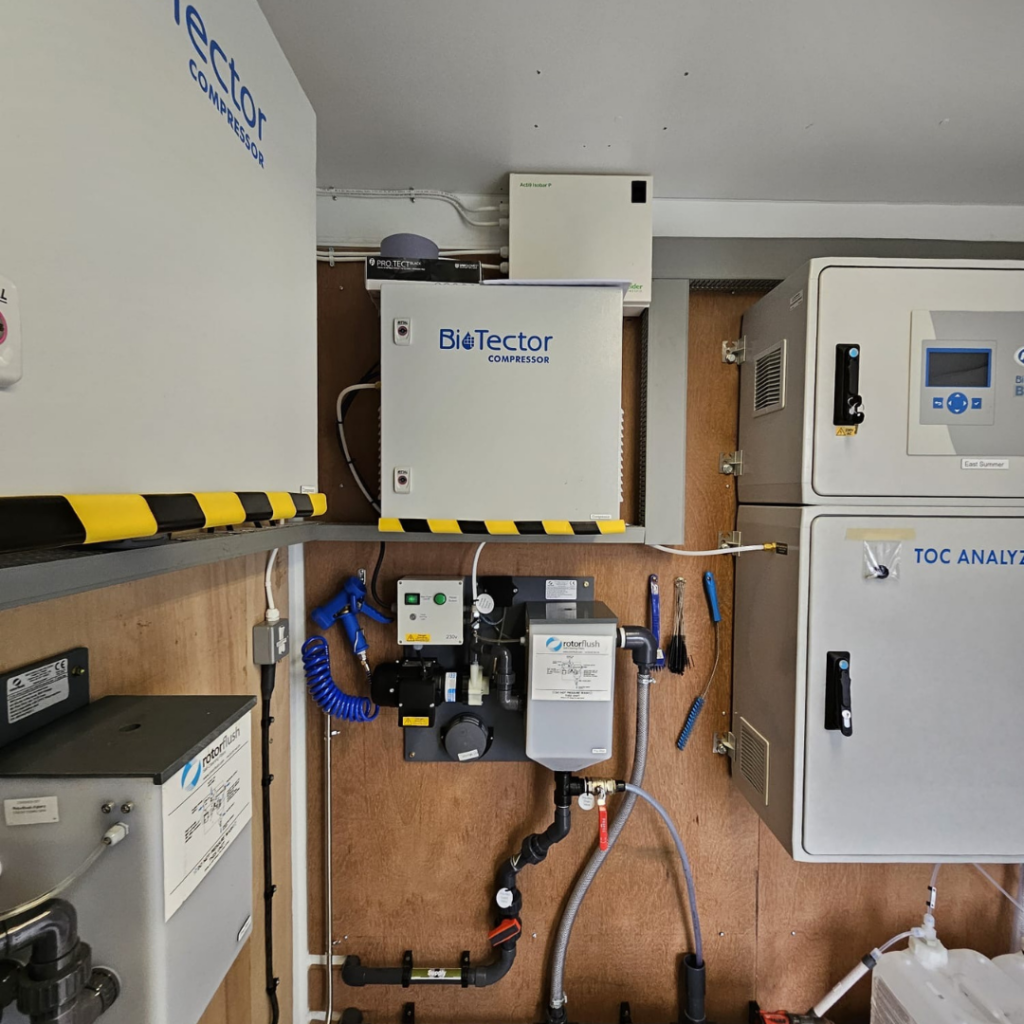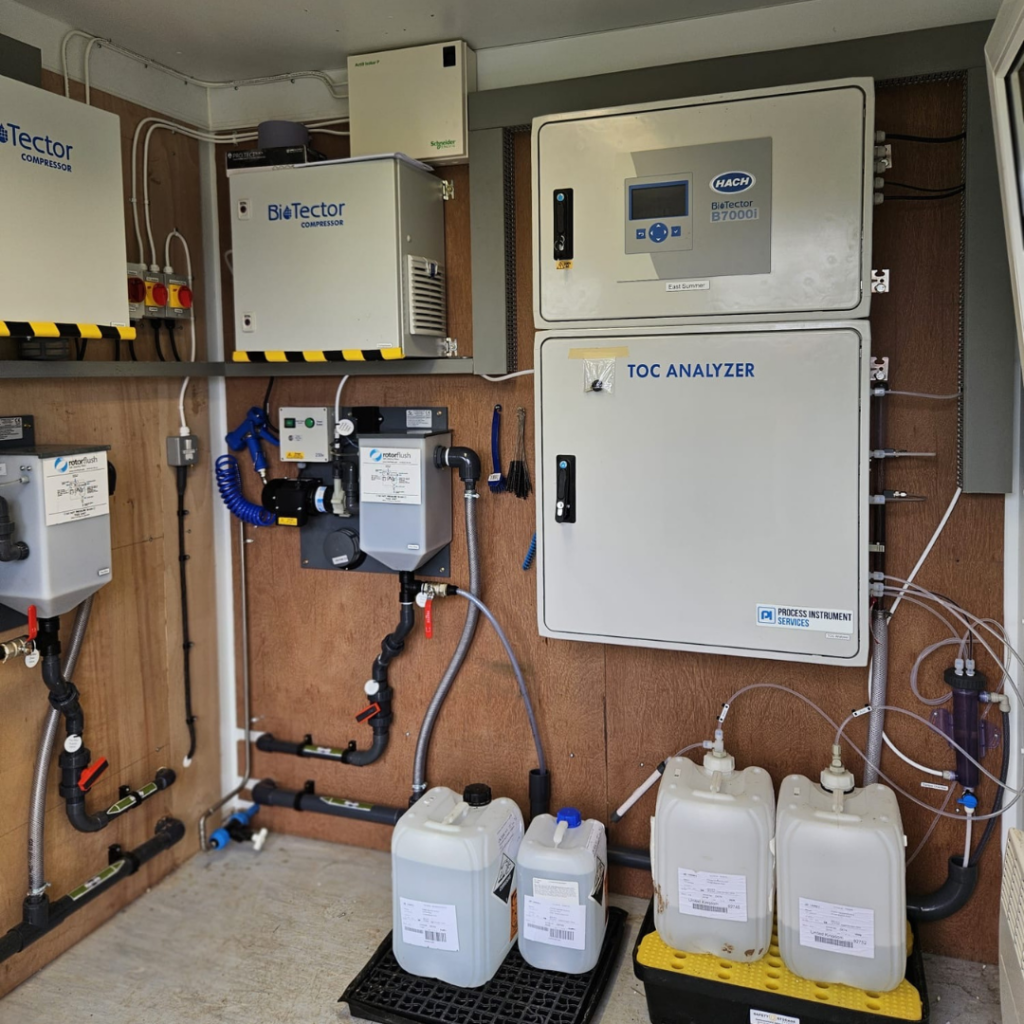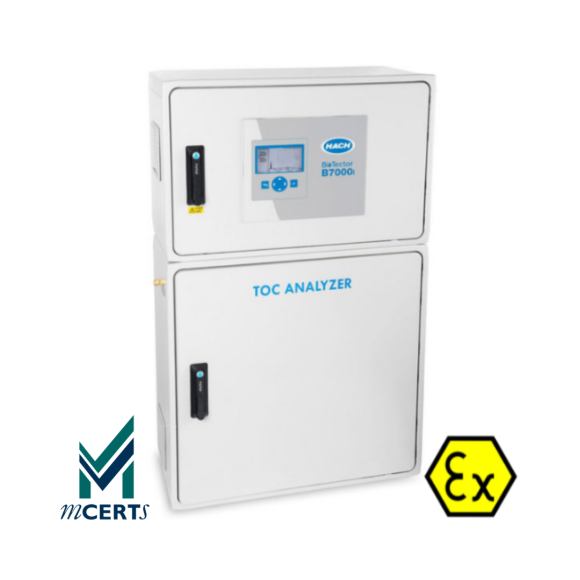Replacement solution for an aging fleet of Biological Oxygen Demand analysers

Background
We were assigned the task of devising a replacement solution for outdated BOD analysers crucial in managing site surface water runoff for East Midlands Airport. The site incorporates various catchment systems to regulate runoff and prevent the contamination of local water sources. During winter, de-icing agents are applied in different areas to prevent ice formation. Regrettably, these agents elevate the Biological Oxygen Demand (BOD) of surface water runoff, rendering it unsuitable for discharge into local watercourses.
To address this concern, a dual system has been implemented. Runoff is channeled to designated winter basins corresponding to specific catchment areas. From there, the runoff is conveyed to additional treatment basins where aeration processes reduce BOD levels. Subsequently, the treated runoff is discharged into local watercourses.
BOD analysis is conducted at each stage of this process, ensuring that the runoff is only transferred to the next treatment area once predetermined levels have been attained. Discharge into natural watercourses is sanctioned solely after achieving safe levels, thereby minimising environmental impact.
Challenge
The client has specifically requested the analysis of future samples for Total Organic Carbon (TOC), which aligns with their group’s preference. Given that the treatment areas are exposed to the elements, there is a possibility of large particulate matter (>2mm) entering the sampling stream. To safeguard the analyser, it is essential to eliminate this particulate matter before conducting the analysis.
This project encompasses the installation of 10 analyzers in two phases. As sampling needs to be conducted close to the source, some installation sites are in remote locations. Additionally, the client has emphasized the necessity for real-time readings accessible through a web browser portal to ensure a comprehensive system health overview.
Solution
Process Instrument Solutions has advised prefiltering the sample before analysis. Our choice was a self-cleaning pre-filtration unit designed to eliminate large particulates, safeguarding the analyser and minimising the maintenance team’s efforts.
Following this, the analysers will undergo thorough testing in relation to BOD analysis (Biochemical oxygen demand) to establish a correlation that can be presented to the regulatory body.
Additionally, a telemetry system will be implemented to enable a web-based portal for clients to monitor system health and access stored data for comparative analysis.
Result
The comparative testing will span the upcoming year, with the findings subsequently shared with the regulatory body. Clients will have access to data for comparison with BOD readings, ensuring the operational efficiency and health of the units.
Our commitment extends to monthly on-site visits, during which we conduct vital maintenance and calibrations.
This proactive approach aims to sustain system availability and maximize the lifespan of the analysers and related equipment.



